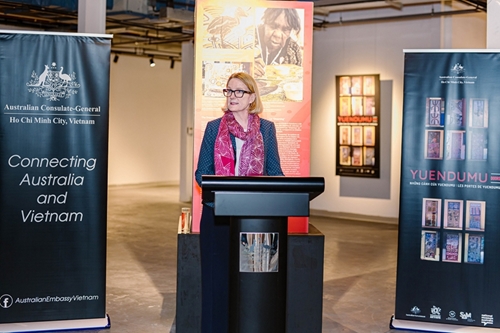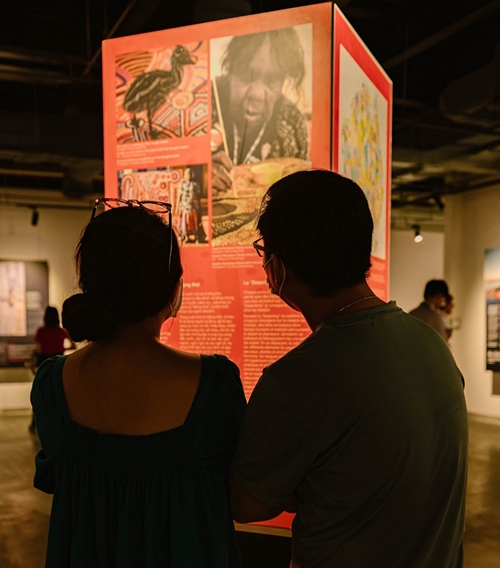The exhibition introduces 15 out of 30 doors painted at Yuendumu community school in the 1980s. These doors were painted with stories from the Dreaming, the aboriginal belief system about the creation of the world by a group of the aboriginal Warlpiri elderly people. Each door is not only a masterpiece but also an invaluable treasure of Warlpiri knowledge and history.
    |
 |
|
Australia’s Consul-General in Ho Chi Minh City Sarah Hooper addresses the event. |
Australia is home to the oldest existing living culture in the world. Aboriginal peoples are known to have lived in Australia for at least 65,000 years. Among the aboriginal communities living in Central Australia for thousands of years, the Warlpiri people are one of the largest groups.
For much of the Warlpiri history, their Dreaming was drawn on the sand, and then erased by desert winds. Though these stories were passed down from generation to generation, Warlpiri people had no sustainable way of preserving their unique art for future generations.
In the early 1980s, they decided to find a way to preserve their ancestral traditions and cultural values for younger generations and introduce them to the world beyond the desert. To this end, in 1984, a group of Warlpiri elders were invited to paint their Dreaming onto the classroom doors at Yuendumu community school so that the children would be wrapped in Warlpiri culture.
And a total of 30 doors were painted with Dreaming stories, providing Yuendumu children with knowledge of their land, ancestors, and traditions. These works also marked the start of Warlpiri contemporary art.
According to Australia’s Consul-General in Ho Chi Minh City Sarah Hooper, it is a great pleasure to introduce the extraordinary ‘Yuendumu Doors’ to audiences in Ho Chi Minh City. The doors are an important part of Australia’s cultural and artistic collection.
    |
 |
|
A work on display at the Yuendumu Doors exhibition in Ho Chi Minh City |
The exhibition coincides with Australia’s annual National Aborigines and Islanders Day Observance Committee (NAIDOC) Week, which celebrates and recognizes the history, culture and achievements of Australia’s aboriginal and Torres Strait Islander peoples.
This international touring exhibition was developed by the South Australian Museum, the National Museum of Australia and the Australian Department of Foreign Affairs and Trade.
Translated by Mai Huong